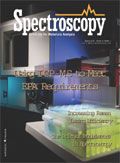Chemometrics in Spectroscopy ? Linearity in Calibration: Quantifying Nonlinearity, Part II (PDF)
At this point in our series dealing with linearity, we have determined that the data under investigation do indeed show a statistically significant amount of nonlinearity, and we have developed a way of characterizing that nonlinearity. Our task now is to come up with a way to quantify the amount of nonlinearity, independent of the scale of either variable, and even independent of the data itself.

Newsletter
Get essential updates on the latest spectroscopy technologies, regulatory standards, and best practices—subscribe today to Spectroscopy.
Scientists Use Water and Light to Uncover Honey Adulteration
July 30th 2025In a 2025 study, Indian researchers demonstrated that combining near-infrared (NIR) spectroscopy with aquaphotomics enables rapid, non-destructive detection of adulterants in honey by analyzing changes in water’s spectral behavior. Using chemometric models, they accurately identified and quantified six common adulterants, offering a powerful tool for food authenticity and quality control.
Scientists Use AI and Spectroscopy to Detect Fake Honey in Bangladesh
July 29th 2025Researchers in Bangladesh have developed a rapid, non-destructive method to detect honey adulteration using UV-Vis-NIR spectroscopy paired with machine learning. Their findings could protect consumers and support food quality enforcement.
Random Forest Algorithms Gain Ground in Biomedical Signal Analysis and Chemico-Biological Research
July 29th 2025A new review article highlights the growing use of random forest machine learning (ML) models in biomedical signal analysis, emphasizing their potential for detecting cell damage, assessing toxicity, and advancing diagnostic classification.
Near-Infrared Spectroscopy for Honey Authentication: A Practical Mini-Tutorial for Food Quality Labs
July 28th 2025This tutorial introduces how NIR spectroscopy works for honey analysis, explores practical workflows, discusses real-world applications, and outlines best practices for implementing this technique in food labs.